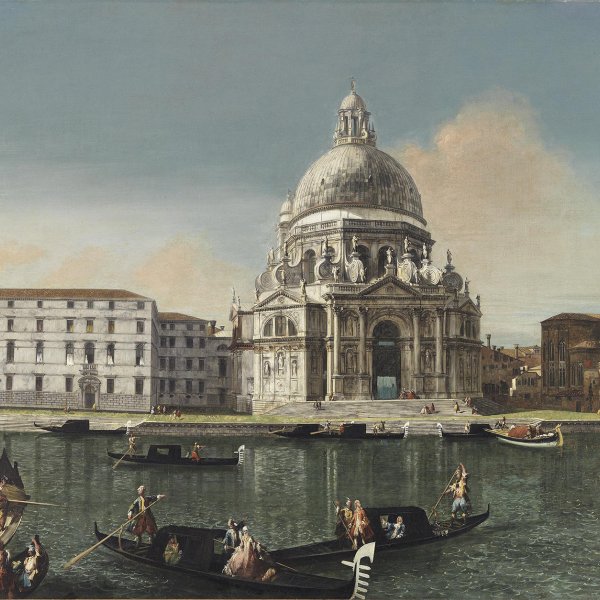Michele Marieschi
Venice, 1710-1743
Little is known of Marieschi’s training. In the Abecedario pittorico of 1753 his first biographers, Orlandi and Guarienti, state that as a young man Marieschi worked in Germany, but there is no documentary proof of this statement. It is more likely that he began as a designer of theatrical sets and other decorative schemes, although recent research also suggests that the may have trained with the history painter Gaspare Diziani. The first documentary reference to Marieschi refers to his participation in 1731 in the decoration of the Piazzetta in Venice for Carnival.
Marieschi began to work as an independent master from the second half of the 1730s. He is only recorded in the fraglia or painters’ guild in Venice for five years, from 1736 to 1741. Initially, and influenced by the work of Marco Ricci and Luca Carlevarijs, Marieschi painted capriccios, including the early examples Capriccio with classical Ruins and Bridge and Capriccio with Roman Arch and Encampment (Museo Civico Gaetano Filangeri, Naples). Shortly after this period Marieschi also turned his attention to view paintings, undoubtedly encouraged by Canaletto’s growing success in this field.
The chronology of Marieschi’s output is difficult to establish as the only recorded dates for his works are those of the twelve compositions painted between 1736 and 1738 for Marshal Schulenburg, his most important client. In 1741 Marieschi published a series of prints including a self-portrait and twenty-one views of Venice entitled Magnificentiores selectioresque urbis Venetiarum prospectus. He died young at the age of thirty-two. His most gifted pupil and follower was Francesco Albotto.
Marieschi began to work as an independent master from the second half of the 1730s. He is only recorded in the fraglia or painters’ guild in Venice for five years, from 1736 to 1741. Initially, and influenced by the work of Marco Ricci and Luca Carlevarijs, Marieschi painted capriccios, including the early examples Capriccio with classical Ruins and Bridge and Capriccio with Roman Arch and Encampment (Museo Civico Gaetano Filangeri, Naples). Shortly after this period Marieschi also turned his attention to view paintings, undoubtedly encouraged by Canaletto’s growing success in this field.
The chronology of Marieschi’s output is difficult to establish as the only recorded dates for his works are those of the twelve compositions painted between 1736 and 1738 for Marshal Schulenburg, his most important client. In 1741 Marieschi published a series of prints including a self-portrait and twenty-one views of Venice entitled Magnificentiores selectioresque urbis Venetiarum prospectus. He died young at the age of thirty-two. His most gifted pupil and follower was Francesco Albotto.





